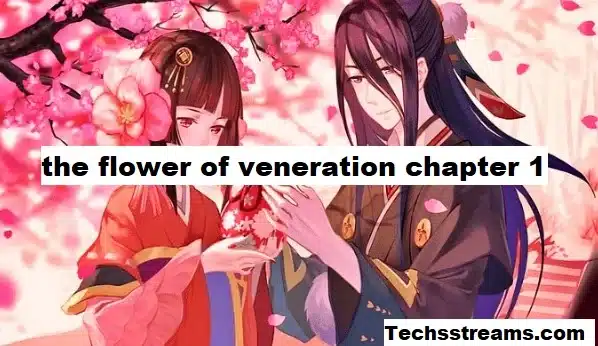
Welcome to an in-depth exploration of “the flower of veneration chapter 1,” a novel that has captivated readers with its rich symbolism and intricate storytelling. In this article, we’ll dive into Chapter 1, uncovering the layers of meaning and narrative craft that set the stage for the entire series.
The flower of veneration chapter 1
the flower of veneration chapter 1 is a profound expression of reverence and respect often directed towards deities, sacred objects, or esteemed individuals. It transcends simple admiration, embodying a deep spiritual or emotional connection.
Historically, veneration has played a critical role in various cultures and religions. From ancient rituals to modern-day practices, it reflects humanity’s quest for meaning and connection with the divine.
The Role of Flowers in Veneration
Flowers have long been symbols of beauty, purity, and life. In the flower of veneration chapter 1, they often represent offerings to deities or have used in ceremonies to signify respect and adoration.
Different cultures attribute unique meanings to flowers. For instance, the lotus flower in Eastern traditions symbolizes purity and enlightenment, while roses in Western traditions often denote love and devotion.
The Main Themes of Chapter 1
the flower of veneration chapter 1 opens with a vivid description of the protagonist’s homeland, a place brimming with natural beauty and cultural richness. This setting establishes the backdrop for the journey that is about to unfold.
We meet the protagonist, a young seeker on a quest for enlightenment. Alongside them are allies and mentors, each bringing their unique perspectives and strengths to the journey.
The Discovery of the Sacred Flower
the flower of veneration chapter 1, central to the narrative, has depicted in exquisite detail. Its radiant petals and enchanting fragrance symbolize more than just a plant; they embody the essence of the protagonist’s spiritual quest.
The First Encounter
The protagonist’s first encounter with the sacred flower is a pivotal moment, marked by awe and reverence. This discovery sets the tone for the transformative journey ahead.
The Symbolic Meaning of the Sacred Flower
The sacred flower is steeped in mythology. Ancient legends speak of its origin, often linking it to divine beings or miraculous events. These stories enrich the flower’s significance in the narrative.
Historical Accounts
Historical texts and folklore provide various accounts of the sacred flower, each adding layers to its mystical allure. These accounts offer insights into how the flower has been perceived and venerated across generations.
Contemporary Interpretations
In today’s context, the sacred flower can seen as a metaphor for personal growth and spiritual awakening. Its timeless appeal lies in its ability to inspire and transform. Readers often find personal connections with the sacred flower, seeing in it a reflection of their own journeys and aspirations. This personal engagement enhances the narrative’s impact.
Character Analysis
The protagonist’s background is rich with details of their upbringing, challenges, and aspirations. These elements shape their character and drive their quest for the sacred flower. Understanding the protagonist’s motivations is key to grasping the narrative’s depth. Their yearning for enlightenment and inner peace propels the story forward.
Supporting Characters
Supporting characters play crucial roles, from loyal allies who aid the protagonist to adversaries who challenge them. Each character adds complexity and richness to the plot. the flower of veneration chapter 1 journey is interwoven with the protagonist’s, creating a tapestry of interconnected stories that enhance the overall narrative.
The Natural Landscape
The natural landscape, described in lush detail, serves as a metaphor for the protagonist’s inner journey. Majestic mountains, serene rivers, and ancient forests all contribute to the setting’s immersive quality.
Man-made structures, from ancient temples to rustic villages, highlight the cultural heritage and architectural beauty of the setting. These structures also symbolize the intersection of the past and present.
Cultural Environment
Local traditions and customs have vividly portrayed, offering readers a glimpse into the rich cultural tapestry that shapes the protagonist’s world. The social dynamics within the community, including relationships, hierarchies, and societal norms, add depth to the setting and influence the characters’ interactions.
The Plot Development
The initial conflict arises from the protagonist’s inner turmoil and external challenges. This conflict sets the stage for the journey and the trials that lie ahead. As the story progresses, the tension builds through a series of events that test the protagonist’s resolve and character. These moments of rising action drive the narrative forward.
Pivotal Moments
The flower of veneration chapter 1 is marked by a significant event that alters the protagonist’s path. This moment is both a culmination of the preceding tension and a catalyst for future developments. While Chapter 1 concludes with a sense of resolution, it also hints at the challenges and discoveries that wait in subsequent chapters, keeping readers engaged and eager for more.
Expressions of faith, ranging from quiet contemplation to elaborate rituals, are central to the narrative. These practices highlight the depth of the characters’ devotion.